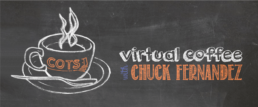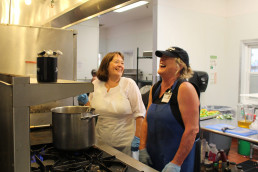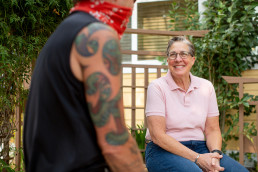Business Profile: The Shuckery

Sisters Jaz, left, and Aluxa, right, owners of Petaluma's The Shuckery and The Oyster Girls
Pearls of Petaluma
When you traffic in oysters, the world is yours. And with that, comes a responsibility and an opportunity to help make your world a better place.
At least, that’s how sisters Jaz and Aluxa Lalicker look at it. Owners, respectively, of Petaluma’s The Shuckery and The Oyster Girls, Jaz and Aluxa take every opportunity to support COTS.
Jaz and her sister cherish that as independent business owners they can focus their time and efforts on causes they care about. “I live in Petaluma. I love it and I want to support it,” Jaz says. She sees the need for help on the streets right outside her restaurant and within her circle of family and friends. “Sometimes, you can get frustrated by how big the problems are. COTS is easy to work with, and they’re getting things done.”
Always a community booster, the pandemic has only increased the sisters’ commitment to community.
In the beginning, Jaz provided customers with basic goods they couldn’t find in grocery stores, preparing care packages of toilet paper and produce from her restaurant suppliers. More recently, in gratitude for their continued support of her restaurant and her staff, she’s taken to changing up her menu to cook whatever her customers want.
And in addition to her own contributions to COTS, she’s connected her customers with us. “I know the type of people who come into my restaurant. They’re looking for ways to help and I can connect them,” Jaz says. Recently, Jaz ran a food drive for COTS, offering discounts to customers who contributed. She also talks about COTS with customers and shares our needs with them.
The sisters arrived in Sonoma County by way of Oklahoma by way of Mexico. They learned what it takes to start and run a business by watching their mother, who, herself, started and ran several businesses. “She really drove that spirit in both of us,” Jaz says.
The oyster focus came about because of Aluxa’s love of the ocean and a trip the sisters took to New Orleans. To Jaz, oyster bars were boisterous and unpretentious and each one was its own animal. “They were welcoming and honest. That’s the kind of place I wanted to open,” Jaz says.
We are grateful to have the Lalicker sisters’ support and advocacy and wish them luck as the world re-opens. Thank you, Jaz and Aluxa!
Want to read more stories about our business sponsors? Visit our Business Gives Back homepage by clicking here!
Share this story with your friends and family:
Business Profile: Barber Cellars

From the minute she and her husband Mike opened Barber Cellars Winery, Lorraine Barber’s been working to strengthen her community.
One of the first things she did is put together a Petaluma Wine Tasting Trail Guide and distribute it free of charge to all the local wineries so that they could support one another. “I like connecting people,” she says, “and I’m a good cheerleader. If I see something good, I want to let people know about it.”
Mike and Lorraine added to their enterprise when they entered into partnership with Aaron Lee to open Barber Lee Spirits. True to form, Lorraine looked for ways to boost the efforts of all the area’s alcohol makers. She started Petaluma Drinks, a festival that celebrated and promoted the products from dozens of local craft alcohol makers, including spirits, wine, beer, cider, bitters, and fermented non-alcoholic beverages such as kombucha and kvass.
And she made sure the festival benefited the larger community by dedicating a portion of ticket sales to COTS.
“We’re rising tide sort of people,” Lorraine says. “We’ve always felt like if others do well, so do we. It feels like a very natural kind of thing.”
“I’ve always tried to put community first and put good energy into it. And this year, we really got it back,” says Lorraine. “Our community saved us and every business in town that’s still standing. Petaluma is incredible, so how could we not give back?”
That’s why, despite all the hardships and increased costs of doing business in a pandemic, Barber Cellars and Barber Lee Spirits are still giving. Those who order wines or spirits online can choose to dedicate 10 percent of their purchase price to COTS.
Their two beautifully appointed shops are on Washington Street. Barber Cellars is in the Hotel Petaluma, and Barber Lee Spirits is next door. Lorraine, who has a background in construction and renovation, is responsible for the airy and inviting décor.
“We just make things we like to drink, and we hope other people like them, too,” Lorraine says. Oftentimes, those are wines in the Italian style. She and Mike began making wine as amateurs in their San Francisco apartment, crushing grapes in the kitchen and fermenting the juices in the bedroom closet. They bought a house in Petaluma “to be closer to the vines” and they’ve remained true to Sonoma County grapes ever since.
They sold that house in order to open up Barber Cellars, a risk worth taking because “It’s what we want to do, and we love doing it.” Lorraine says. “And we are too stubborn to fail!”
They partnered with Aaron Lee to create out-of-the-ordinary spirits, including single malt rye whiskey, white absinthe and apple brandy made using local apples.
Thank you to these passionate makers. If you’d like to support COTS with the purchase of a locally crafted wine or spirit, you can click below.
Visit Barber Cellars | Visit Barber Lee Spirits
Want to read more stories about our business sponsors? Visit our Business Gives Back homepage by clicking here!
Share this story with your friends and family:
Business Profile: Petaluma Health Care District

COTS Lead Outreach Specialist Randy Clay, who works with Petaluma Sober Circle, speaking with a client
Since the 1940s, when voters approved its formation, the Petaluma Health Care District’s central mission has been to serve the health needs of South County residents.
That’s meant huge projects, like replacing an outdated hospital with the emergency room-equipped Petaluma Valley Hospital. It’s meant keeping PVH open while other small hospitals across the country struggled and hundreds of them closed. It’s meant allowing the Petaluma Health Center to incubate under the district’s umbrella and then separate to become a fully-fledged Federally Qualified Health Center.
It’s also meant partnerships with community organizations, including a 30-year partnership with COTS.
“Health care doesn’t stop at the doctor’s office door,” explains Ramona Faith, the District’s CEO. “So many things contribute to good health. And community health means all the community. Every one of us. That’s why we work with COTS.”
“Ramona gets us focused,” says Robin Phoenix, COTS’ Shelter Services Manager. “She brings people to the table and she makes things happen.”
And the results are both tremendous and impactful.
Robin’s favorite collaboration is The Petaluma Sober Circle, which the District convened and helps to manage.
Sober Circle involves an array of partners and provides a through-line of support through treatment, shelter, and housing to those who struggle with addiction. At the same time, Sober Circle reduces financial burdens to the local healthcare system and to the public sector by reducing reliance on costly emergency resources. Since the program started, for example, the police have had to make 80 percent fewer transports to the county detox center. Sober Circle participants make fewer trips to the emergency room, are hospitalized much less frequently and receive coordinated wrap-around services to help them pursue a path to recovery.
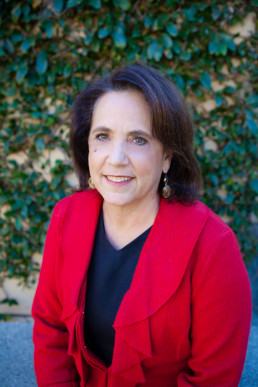
Ramona Faith, PHCD’s CEO
“Because Ramona got us all together in one room, we now have people who are getting the support they need to change their lives. And we see benefits to the entire community. It’s a beautiful thing,” Robin says. “This wouldn’t have happened without the Health Care District’s support and leadership.”
And like good collaborations, Sober Circle has only led to more partnerships and collaborations.
The Health Care District focuses its community efforts in five areas: access to health services; mental health and substance abuse; heart health and healthy food; housing affordability and availability; and equity in educational opportunities from “cradle to career” as the District calls it.
For those students, the District frequently partners with the Petaluma Educational Foundation, helping to develop and fund programs to enhance students’ physical, mental and emotional health. PEF Executive Director Maureen Highland says the District helps “lead the way” in creating innovative, useful and popular programs.
What’s next?
In November, voters authorized the sale of the Petaluma Valley Hospital in exchange for over $52 million and an agreement to keep the hospital open for at least 20 years.
For Ramona and her staff, that means more time and resources to further the health of the community. They are in the initial stages of involving the community in the creation of a thoughtful, strategic and sustainable plan to invest the proceeds of the sale in services and programs that will improve our health in southern Sonoma County for years to come.
Thank you, Petaluma Health Care District.
Want to read more stories about our business sponsors? Visit our Business Gives Back homepage by clicking here!
Share this story with your friends and family:
Chuck's Virtual Coffee - February 2021
As COTS’ CEO, each month I take a moment to consider what I want our community to know about our organization and our progress in serving Sonoma County’s homeless. I look forward to sharing these thoughts with you in this Virtual Cup of Coffee – my monthly communique about the business and mission moments of COTS (Committee On The Shelterless).
My best,
Chuck

Equity and Homelessness
People experiencing homelessness are some of the most disadvantaged in our communities. And Black, Indigenous, and People of Color (BIPOC) suffer more vulnerabilities and poverty that put them at a higher risk of homelessness. Nationally, Black people comprise 13% of the general population and 26% of those living in poverty. Yet, of the estimated 557,000 people currently experiencing homelessness in the U.S., 40% are Black. Overall, Black people are five times more likely to experience homelessness than White people, and Native Americans are four times more likely to experience homelessness than White people.
In Los Angeles County, of the estimated 66,000 people experiencing homelessness, 34% are Black. In San Francisco, of the estimated 8,800 people experiencing homelessness, 37% are Black. And in Sonoma County, of the 2,745 estimated homeless, 36% identified as Multi-Race/Other, Black, American Indian/Alaskan Native, and Pacific Islander/Asian.
Our fellow human beings struggle every day with the things that many of us take for granted – access to health care, housing, quality education, good jobs. If Equity means fairness and justice in the way people are treated, then our responsibility as homeless service providers is to help correct these imbalances across our human services, health, and economic systems. So how do we do that?
One start is to conduct an audit of our homeless system of care in Sonoma County – how we assess, prioritize, and house people experiencing homelessness; our system for creating policy and making decisions; our Strategic Plan and goals set forth by County leaders and by Housing and Urban Development (HUD); how we collect and analyze data and report outcomes; and training programs offered to service providers – all through the lens of Racial Equity.
For example, one policy that directly impacts COTS every day is the Coordinated Entry System (CES), and specifically, the assessment tool used to prioritize and get people into shelter and housing. That tool is a seven-page assessment called Vulnerability Index & Service Prioritization and Decision Assistance Tool (VI-SPDAT). There are no questions that ask about race, ethnicity, or other inequities impacting disenfranchised communities (including LGBTQ+) that would affect access to housing and determine interventions for homeless subpopulations. CES refers only those with the highest VI-SPDAT scores (the most vulnerable) which, unfortunately, leaves many shelter beds that can only be used by the CES, empty. Those empty beds could be used by other subpopulations of homelessness or those with lower assessment scores, thereby getting people off the streets, sheltered, and housed. Better yet, the County could eliminate the CES for shelters and allow shelter staff, who know their community needs and population, to work with local partners to better utilize the shelter beds, again through the lens of Racial Equity.
Of course, looking at homelessness through an equity lens also means looking at the root causes of homelessness besides racism – lack of employment, incarceration, domestic violence, being a foster youth, mental illness. It also means looking at pathways out of homelessness for people of color that are complicated by ongoing discrimination in housing, employment, health care, and education. We won’t solve this overnight. At COTS, we are starting to have our own conversations about getting our house in order – examining our own micro-aggressions, privilege and power, and our implicit biases. We know it won’t be easy, simple, or comfortable. But honestly…nothing worthwhile ever is.
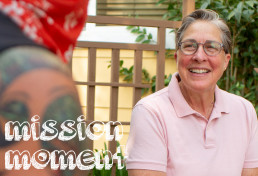
Pictured: Shelter Services Manager Robin Phoenix speaking with a client
Having The Right People…
Remember the saying, “God doesn’t give us what we can handle, God helps us handle what we are given.” Well…sometimes I wish he/she/they didn’t have so much confidence in us. As I mentioned in the Business section, Coordinated Entry gives us the most vulnerable people experiencing homelessness – those with severe and persistent mental illness, substance abuse, anger, and just the inability to handle the basic daily living functions of eating, sleeping, and taking a shower. And on top of all this, we have COVID. So what are we doing to handle all of this? The answer is simple but getting there was not – having the right people.
I sat down with Shelter Services Manager Robin Phoenix and we talked about the difficult behaviors in the shelter and how she and her team handle it every single day. And Robin’s answer was simple: “we have the best people I have ever worked with in my career.” Robin shared that COTS’s shelter team sees people not as addicts, alcoholics, or troubled people, but as human beings. She says the shelter team really does reach people, makes a difference, and truly loves them, and it’s because of that belief and love that they believe they can and do make a difference. Robin said that in this business, you have to be tenacious and keep trying. She said, “people matter, their lives matter,” and that shelter clients are some of the nicest, kindest people you’ll ever meet…even though some are just so difficult to work with. Robin believes it is a basic human right to have a bathroom, a place to shower, and a place to call home. It’s just basic human decency.
Getting the right people was not easy. We are careful in our interview process, take our time, and do not hire just to fill a position. We are intentional about qualities we need – compassion, no judgement, a ferocious advocacy for our clients yet able to set boundaries and be firm when needed. It hasn’t been easy, as there were some people that simply did not work out. And…we made our share of mistakes. But we were unbending in our selection process. After all, those experiencing homelessness deserve the best people helping them. And when you get it right…like Robin shared – it’s like WOW!

Until next month,

Chuck Fernandez
Chuck's Virtual Coffee - January 2021
As COTS’ CEO, each month I take a moment to consider what I want our community to know about our organization and our progress in serving Sonoma County’s homeless. I look forward to sharing these thoughts with you in this Virtual Cup of Coffee – my monthly communique about the business and mission moments of COTS (Committee On The Shelterless).
Happy New Year,
Chuck
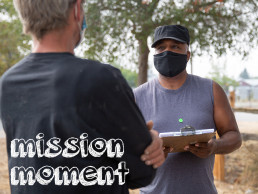
Annual Point in Time (PIT) Count
We recently received the results of the Annual Point in Time Count conducted in February 2020. Because of COVID, it took some six months longer to get the results. Teams were dispersed throughout Sonoma County to count individuals and families sleeping on the streets, in cars, abandoned properties, under bridges, and other places not meant for human habitation (considered unsheltered). We also counted people living in shelters (considered sheltered).
Why do this?
The PIT is the only source of national data on sheltered and unsheltered homeless and is required by the U.S. Department of Housing and Urban Development (HUD). This data helps the federal government better understand homelessness and also helps local communities in their strategic planning, capacity building, and advocacy campaigns to prevent and end homelessness.
All the data are collected by a consulting firm who then runs it through numerous calculations and algorithms to produce the results. If you love statistics, then you’ll love all the data that is produced. The report is some 80 pages and is an excellent source of all things homelessness in the County.
Show me the numbers…
Here are some 2020 results that may answer some questions:
- 2,745 – Total sheltered and unsheltered experiencing homelessness in Sonoma County
- 7% – Reduction in homelessness from 2019
- 597 – Total sheltered and unsheltered experiencing homelessness in South County, which is Cotati, Petaluma, Rohnert Park
- 33% – Increase in homelessness in South County from 2019. Rohnert Park accounted for the biggest increase – from 129 in 2019 to 248 in 2020, a 92% increase
- 296 – Total sheltered and unsheltered experiencing homelessness in Petaluma
- 12% – Increase in homelessness in Petaluma from 2019
Some other important 2020 results…
- 73% of homeless were men and 27% were women
- 64% were White; 19% Multi-Race; 9% American Indian or Alaskan Native, 6% Black or African American
- 31% were homeless for the first time
- 19% were age 50 or older
- 60% were homeless for 1 year or more
- 29% had their dwelling burned, destroyed, or had smoke damage due to the fires
- 22% were homeless due to loss of a job
- 16% were homeless due to alcohol or drug use
- 15% were homeless due to an argument with family or friend
- 70% indicated that they could not afford the rent to get housing
- 36% indicated drug or alcohol abuse
- 40% indicated psychiatric or emotional conditions
- 39% had a history of domestic violence
- 139 – the number of Veterans that were homeless
So, what does all this mean? Couple of things.
More shelters do not end homelessness. More housing does. Because of the lack of affordable housing and supply/demand issues, homeless service providers must have seasoned real estate professionals that work with landlords and developers to get more housing. We also need to try new approaches, like a tiny homes village that could house people at lower costs and with dignity. Or purchase a fourplex to house families and children instead of putting them in a shelter. Children suffer from embarrassment when a school bus picks them up at a homeless shelter. We could also consider leasing homes throughout the community, each specializing in the different homeless sub-populations – those working on sobriety, adults wanting to be together, homes for women, seniors, Veterans, or LGBTQIA+/gender non-conforming.
Intense Wrap-Around Services. One of the tenets of Housing First is to get people off the streets and then provide them with services to help them stabilize and address their issues that made them homeless. One can’t work on their challenges if they don’t have the security and safety of a home.
Collaboration. Homelessness is complicated and if we are to make more progress, we must do it together – with health care providers, mental health specialists, law enforcement, City and County officials, the faith community, other homeless providers, volunteers, and the donors who make important contributions to continue this vital work.
Because of COVID, we will only count the sheltered in 2021. We are certain that there will be more unsheltered because of the impact of the pandemic on our community. Yes, we have lots of work ahead of us. But we also envision a community where everyone has a place to call home.

Until next month,

Chuck Fernandez
Meet the Team: Diana Morales
How have things changed with volunteering as a result of Covid? How has our volunteer program changed and adapted since March of 2020?
Our kitchen staff – chef Janin and Max – are amazing. They are the ones that have put the program together where they know how many volunteers they need at what time of the day, and that comes from them just doing their jobs and knowing how to do their jobs, and they do it really well. One of the things they have had to do, Chef Janin mostly, she’s had to adjust her food; she’s used to making a lot of food, and now she doesn’t get to cook these great big meals, and that’s hard on her.
They have a rhythm in the kitchen they never had before, and that’s because the schedule is very strict, the amount of people they can have is very strict. They have a lot of health protocols in place, from the county and city. It’s actually very smooth now, but we miss our core volunteers. I don’t know the volunteers like I used to, and I think that’s usually one of the advantages for our clients, that they knew who was going to be there every day. Our clients are still getting good food and compassionate service, but it’s not the same people all the time.
Our kitchen is thriving. Chef Janin is doing an amazing job. But I think we miss the personalities. Everybody wears masks so I don’t know what the volunteers look like, and I don’t know them personally. But we’ve got a good program in place. I’m looking forward to having our core volunteers back. I miss them.
How have our volunteers responded to these changes?
The core volunteers all say the same thing: when Covid is gone, they want to come back, they’re looking forward to coming back. Our volunteers now love the kitchen. One of the volunteers who just finished her hours told me she didn’t know anything about kitchens before her time here, and by the end of her hours, Janin was asking for her input on recipes.
I have never heard anything negative coming out of the kitchen ever. I follow-up with all of our volunteers at the end of their time with us and they all say it’s fun. That’s just Chef Janin doing her thing.
What new opportunities are there for those who still want to volunteer but can’t or don’t want to serve in the kitchen?
This isn’t new, it’s something that’s been around forever, but it’s something we need all the time because our case managers are amazing, and it’s welcome home baskets. That’s something I’m sending out to the students now. We got a lot of new donations during Christmas, but there’s always a need since we’re constantly getting new families. Donation drives are what we’re looking for right now.
I know we normally get an influx of volunteers and donations around the holidays, and that we couldn’t hold our annual free store for our clients. How were the holidays different this year, both in regards to volunteering and donations to serve our clients?
Last year we had a store with room for back stock and we were able to let families come in and look at things and make sure each gift was the perfect gift, and this year we weren’t able to do that. By not utilizing the store front, our clients weren’t able to see everything we had.
Everything we asked for from our donors, we got. We were overwhelmed with gift cards, which we really needed, and lots of toys. We were able to help not only our clients but the community. Word of mouth got around, and I was having people call asking for help. At one point I closed off the small half of the kitchen and Robin, Stacie, Janin and I set everything out and we were able to have people come in and safely pick up gifts. This year we were also able to help out foster kids which is not something we were able to do last year, which was amazing.
What kinds of donations did we receive this holiday season?
We got every single thing that the Mary Isaak Center needed for their clients and for our unsheltered clients: we got sleeping bags, sweats in all sizes, brand new underwear, rain ponchos, for our outreach clients. B’Nai Jewish Center’s people really stepped up and did so much for us.
When people come into the shelter, a lot of times they have nothing, and now we have brand new sweatshirts and socks, underwear – someone donated 100 pairs of shoes – and when we bring in a client we are able to get them a hot shower and a warm meal and clean clothes. That’s one of the best things we can do for people, is help them feel warm and safe and full.
We don’t want to try and push our unsheltered clients, but I think that when they see that we can offer them warm blankets or a poncho or food or sweat clothes to keep them dry and warm, I think it plants a seed, and at some point they may say, ‘y’know what, I want that on a daily basis.’ All those donations we got for Christmas are going to maybe help change somebody’s mind about coming in.
What has been your experience with the community wanting to help during this past year?
People want to help but they don’t know how. They want to know what we’re doing and how we do it and how can they help. I think the Client Enrichment program is an amazing model because people are tired of being in their own lives, now they can go out and pull weeds, and they like doing that, or meet a client and have a one-on-one experience with them and they know how they’re enriching their lives. Sometimes we don’t need what people are offering, but we can offer them other alternatives.
How have our in-kind donations and volunteers made an impact on our clients’ lives this year?
Our donors help add to the quality of life for our clients, whether our clients are receiving brand new sweats and underwear at MIC or they’re receiving a bed and a box spring and a chest of drawers for their house that they’re moving into, or a gas card that’s going to help them get to and from their doctor’s appointments in Santa Rosa. Or if they’re partaking in the Client Enrichment program and they all of a sudden have this resume that’s amazing, or somebody is coaching them and helping to bring them out of shell.
We enrich our clients’ lives in so many different ways, whether it’s through donations of goods or donations or time. Our donors enrich our clients by giving them food from artisanal bakeries, bread they might never be able to afford, eggs that come from free range chickens, Clover milk that’s pure milk free from growth hormones, vegan cheese they might never have experienced. They just make our lives better. They absolutely impact everything our clients do. Literally it takes a village to take a person that has walked through our door and get them to their own door, it takes all of us.
Do you have any other thoughts you’d like to share?
One thing I think about COTS is because we have such good leadership we’re able to bend with the times. Our leadership is one step ahead of everything so we’re able to keep doing what we do and do what needs to be done. We can handle change because we have great leadership, and that’s something we can all do.
Tell you what, next year I’m going to utilize the storefront for the Free Store (laughs).
Chuck's Virtual Coffee - December 2020
As COTS’ CEO, each month I take a moment to consider what I want our community to know about our organization and our progress in serving Sonoma County’s homeless. I look forward to sharing these thoughts with you in this Virtual Cup of Coffee – my monthly communique about the business and mission moments of COTS (Committee On The Shelterless).
Please stay safe,
Chuck
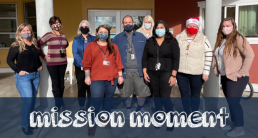
Our case management team, from left to right: Debbie Robbins, Housing Case Manager & Case Management Trainer; Carmen Razo-Clark, Housing Case Manager; Kathleen Sinnott, Housing Case Manager; Julia Dodge, Supportive Programs Case Manager; Chris Inclan, Shelter Case Manager; Christina Madden, Shelter Case Manager & Recovery Specialist; Angeles Cruz, Shelter Case Manager; Wendy Lindberg, Shelter Case Manager; and Sarah Vetter, Homelessness Prevention Case Manager. Not pictured: Eileen Morris, Client Enrichment Manager.
Holding the Hope for Others
Ever wonder what case management means or what a case manager does? We often use this term in the non-profit and social services world. Because we don’t make stuff like computer chips, phones, or say fruitcake (well…it is the holidays and the favorite of many), case management is our lifeblood. Great case managers can determine how successful we are in helping those experiencing homelessness, how innovative we can be with impactful services and programs, and how well we connect on a human level.
Here’s what you’ll learn if you Google case managers: “They are social service workers who coordinate care for their clients; perform interviews and assessments to learn a client’s needs and then together, create a plan to work on their challenges or connect them with needed services. As the client receives services, case managers will monitor the client’s progress and may work with other service providers as needed to address the client’s needs.” Unlike social workers, case mangers do not provide therapy, though they may provide counseling to clients. They usually have a Bachelor’s degree in psychology, criminal justice, or sociology, and some may have a Master’s degree. They often have training, have taken specialty classes, or are certified in addiction, substance abuse, or drug and alcohol counseling.
Key strengths in good case managers are skills like communication…especially listening, interviewing and critical thinking, negotiation and collaboration, knowing your boundaries, advocacy, teaching, involving the clients in making decisions that impact their lives (choice and self-determination), respect for cultural diversity, and quality of care.
I sat down with COTS case manager Chris Inclan and he shared with me what he does. And honestly, Chris does and has all of the above skills…and so much more. And if I sat with our other case managers at COTS – Angeles, Carmen, Christina, Debbie, Eileen, Julia, Kathleen, Sarah, and Wendy – they too would have all of the above skills…and so much more.
Chris said case management is about supporting clients to live their best lives. To push people beyond what they think they can do. To meet clients where they are. To give a different perspective on how best to look at issues – alternatives. Often, clients feel disconnected and have lost all hope. Chris helps to show them opportunities. He helps them with using technology as many don’t know how to navigate online help. He helps them build skills so they can feel empowered and independent. He helps them to be in the present moment, to appreciate the beauty of what’s around them, and what all of that can teach them. He helps them to be grateful that they have food in their stomachs and a roof over their head.
Chris started a mindfulness and self-esteem group at COTS to help clients deal with the pain they are realizing, to try and not be the victim, and to look inward as a locus of control and not rely on the external world.
Our clients at COTS are the beneficiaries of numerous innovative programs and services provided by our case managers. Julia, Christina, and Eileen started various recovery maintenance and life skills groups. All of our wonderful case managers hold the hope for our clients until they can hold the hope for themselves. They care, are compassionate, and are committed advocates for their clients. If I were a client at the Mary Isaak Center and needed case management, I would be in very good hands with each one of our case managers.
Someone defined a case manager as a person who solves problems you never knew existed in ways that will blow your mind. A Miracle Worker or Superhero. Yep, that defines all of our case managers at COTS.

Until next month,

Chuck Fernandez
Chuck's Virtual Coffee - November 2020
As COTS’ CEO, each month I take a moment to consider what I want our community to know about our organization and our progress in serving Sonoma County’s homeless. I look forward to sharing these thoughts with you in this Virtual Cup of Coffee – my monthly communique about the business and mission moments of COTS (Committee On The Shelterless).
Please stay safe,
Chuck

The Basics of Operating Mary Isaak Shelter
I often get questions from the community about how we operate our homeless shelter. Well, operating a homeless shelter is certainly not for the faint of heart, so let me share a few of our fundamental operating processes.
Accountability – Clients are admitted to our shelter for an initial period of 30 days. They are assigned a Case Manager (CM) within one week of admittance. Together, an Assessment is performed to determine where the client is and what challenges they want to address. An Individual Action Plan or IAP is then created with goals to achieve based on the Assessment. Their stay is extended in 30-day increments if they are making progress toward their goals – getting housing, employment, addressing their medical, mental health, addiction, or legal issues, etc. Accountability is critical for success. Shelter stays, however, cannot exceed 180 days. This is because the government believes that anything more than 180 days becomes Transitional Housing, and clients lose motivation to improve their situation, and that is not the intended purpose of a Housing First shelter. Funding then becomes jeopardized.
Coordinated Entry System (CES) – 50% of the beds at COTS or 40 beds, must be filled through the Coordinated Entry System (CES). This is a requirement of the government funding we receive. A person must get on the CES Waitlist, take an assessment to determine their medical and mental health vulnerability, and then are assigned a Vulnerability Index, with the higher scores (more vulnerable) being eligible for shelter. CES must also verify that a person is homeless through a process called Third Party Verification, such as communicating with other social service providers for written proof. Referrals from CES can take 48 hours. Unless we get the CES approval, we cannot allow people immediate access to those 40 shelter beds.
Use of the other 40 beds is determined by COTS and not CES, and does not require a Vulnerability Index.
Also, individuals coming into the shelter must be at least 18 years of age; take and pass a TB clearance; must not be a convicted sex offender, arsonist, or have a history of behaviors that would put others in jeopardy; agree to be nonviolent and live harmoniously with other residents; and agree to help maintain order and cleanliness in the shelter.
Safety – For safety reasons, we also have to be careful who we allow into the shelter. When COTS was a dry shelter – no alcohol or drugs – the shelter was much easier to operate, and client behavior was less complicated. Today, because the State and County have adopted the Housing First Model, shelters receiving government funding must be low barrier, meaning a wet shelter – allowing the use of drugs and alcohol. The clients coming in through CES have much higher needs with significant medical, mental health, and substance abuse challenges. We do not, however, receive funding that allows us to hire the appropriately trained staff needed to work with these high needs clients. Fentanyl, for example, has created troubling behaviors that most shelters are not trained to deal with.
Housing First – Our focus is getting people housed. Our Mission Statement says, “We assist those experiencing homelessness in finding and keeping housing, increasing self-sufficiency, and improving well-being.” This means that our responsibility is to assist people from encampments, the streets, and in shelters to get into housing and then help them stay there through various social services. We hold our clients in the shelter accountable to do just that.
We try to balance safety and compliance with flexibility and giving people 2nd, 3rd, and 4th chances to get off the streets and into shelter. Afterall, it can be that 4th chance that can make all the positive difference in someone’s life.

Almost every Saturday, Gary and Judy Parker bring cereal to the Mary Isaak Center.
Spoonfuls of Love
We’ve all heard that breakfast is the most important meal of the day. And while eggs, meat, bread, and fruit are part of the breakfast routine for many, cereal is still the King and Queen of breakfast. Did you know that the average American eats about 10 pounds or 160 bowls of cereal every year? WOW! Given that there are more than 300M people in the U.S., that’s a lot of, well, milk. Americans buy some 2.7 billion boxes of cereal each year, enough to stretch to the moon and back. And it appears that there is growing demand for healthier cereals – high fiber and grain based – versus sugary cereals.
Almost every Saturday, Gary and Judy Parker bring cereal to the Mary Isaak Center. They’ve been doing this for years. I spoke with them recently and asked them why they do this. They are vegetarians and they wanted to donate something that is in line with their values of healthy eating. They’ve been vegetarians for 50 years and married for 47 years. They go to Costco and buy the large boxes of healthy cereal – Raisin Bran, Cheerios, Bran Flakes. They said people are suffering so much and that there is nothing worse than being homeless. Every time they leave COTS, they feel better knowing that they helped someone eat healthier.
Our Shelter Manager Robin Phoenix said Gary and Judy give because they appreciate what we do to serve the homeless population. They set aside money every month to give to organizations they believe in. She shared with Gary and Judy that the cereal they buy for our residents makes a huge difference, is more to our clients’ liking, and makes them happy. Robin said they are a beautiful couple who want to share their good fortune and their values of healthy eating.
Giving is a very personal thing. When couples give together, it gives them an opportunity not only to connect with each other on issues and values that they care deeply about, but it also provides an opportunity for their relationship to grow. Giving creates togetherness. I saw that in Gary and Judy. They are a kind and caring couple who are deeply committed to helping those experiencing homelessness.
Cheerio to you Gary and Judy, and thank you so much for all that you do for COTS, our Mary Isaak Center, and for those experiencing homelessness.

Until next month,

Chuck Fernandez
November 2020 E-News: New Programs and Partnerships, plus Watch COTS’ latest Virtual Town Hall!
Each month, COTS staff are proud to share news of our programs, our community, and our clients as they work towards permanent housing. Thank you for reading and for supporting our work to end homelessness in Sonoma County!
Watch COTS’ Virtual Town Hall!
Last week, COTS hosted a Virtual Town Hall to share the news of two new programs for clients with our community. If you missed the Zoom call, you can view it now on our YouTube by clicking here!
We discuss Pathways, a more cohesive set of offerings for clients who wish to pursue sobriety, including expanded recovery meetings, designated space at our Mary Isaak Center shelter, sober homes in our Integrity House program, and a 21-day Challenge for those interested in coming into shelter from living outside.
We also share more about Client Enrichment, a new set of offerings for clients that connects them with volunteers to provide resume help, job interview support, legal aid and more. Client Enrichment is spearheaded by Eileen Morris and is actively seeking volunteers! To learn more, contact Eileen at [email protected] or 707.765.6530 x128.
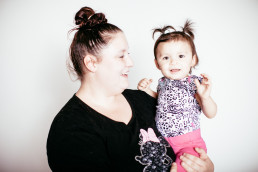
Petaluma Preventing Homelessness
Throughout 2020, COTS has seen a rise in calls for our Homelessness Prevention services. This program helps people who are currently housed with rent or other assistance when they’re facing job loss or other loss of income – to prevent them from falling into homelessness before it happens.
We are so lucky that our local government also understands the urgency of keeping people housed. On October 19, 2020, the City Council in Petaluma approved a $150,000 grant to COTS and PPSC for rental assistance, to be spent over three years through our Homelessness Prevention program. These funds will not just help the individuals who receive support but will help our entire community to remain more stable no matter what the next year may bring. Thank you to the City Council for this generous investment in the people of Petaluma – we are so grateful for your foresight and support!
If you or someone you know is in need of our homelessness prevention services, please call Sarah Vetter, Homelessness Prevention Case Manager, at 707.765.6530 x201.
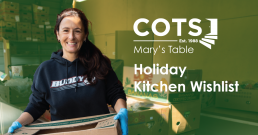
Holiday Wish List – Updated for November!
The kitchen at Mary’s Table needs your help making the holidays merry and bright for adults and families in our community experiencing hunger. With Thanksgiving around the corner, can you supply any of these items?
- Aluminum Roasting Pans
- Bags and Boxes of Stuffing
- Butter
- Chicken Stock
- Marshmallows
- French Fried Onions
- Brown Sugar
- Jared and Powdered Gravy
- 15-20 lb. Turkeys
- Hams
- Briskets
- Cranberries-Canned and Fresh
- Canned Tomatoes
- Pasta
- Canned Veggies
- Refried Beans
- Canned Beans
- Maple/Pumpkin Spice Favored Pudding
- Holiday Cookie Decorating Kits
- Holiday Cookie Cutters
- Colored Sprinkles and Sugar crystals
- Popcorn
- Chips
- Punch
- Disposable Soup Cups with Lids
If so, please bring them to the Mary Isaak Center at 900 Hopper St. in Petaluma, behind the Goodwill. Or, bring them into the Shuckery any time between now and Christmas and receive 10% off your meal! If you have any questions, please contact Diana Morales, Engagement Specialist, at [email protected] or 707.765.6530 x136.
Find out more about helping out during the holidays by clicking here
From Homeless to Housing
COTS’ Case Manager Christina Madden got the best kind of news when a former client reached out with the text to the right – including a picture of her new car! Our client came to COTS with a multitude of mental and physical health issues, including congestive heart failure, diabetes, and depression. So COTS put the full weight of our local partnerships to work for her!
We were able to connect her with Annie Nicol at the Petaluma Health Center and Asya Sorokurs at Sonoma County Legal Aid to help appeal her SSDI claim and start recouping an income.
After working with Christina, our client was approved for Medi-Cal, food stamps, and a free cell phone through Lifeline. She was then able to start making medical appointments and get her medications and lab work done.
She also started working with a therapist through Petaluma Family Therapy – a new partnership COTS launched in 2020. Before long, she was interviewing for housing through Share Sonoma County and had found employment – which just goes to show that stability is possible with a little help from friends. Here’s wishing our client a great start in her new digs!
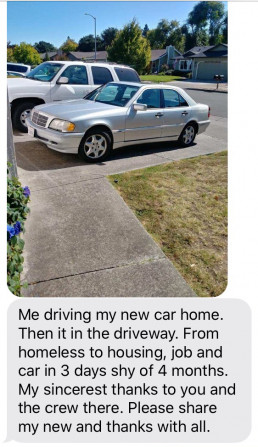

And don’t forget to register for The COTS Hour-at-Home Today!
Our virtual fundraiser will air on December 3, 2020 throughout the day. We can’t wait to share more about our year and how we continue to serve those experiencing homelessness no matter what challenges we face as a community! Learn more at cots.org/the-cots-hour-at-home
Feeling uncertain about watching a virtual event? We made this helpful How-To Guide to show you how!

Business Profile: Hotel Petaluma

“The friendly doors welcome the stranger and under its hospitable roof the friends of Petaluma find always only goodwill. It stands as evidence and proof of the faith which the people of Petaluma have in each other and in their city.”
—Plaque placed at the Hotel Petaluma by its community founders in the 1920s.
Shannon Kremer takes the long view.
The pandemic may have slowed progress for the Hotel Petaluma, but so did the Great Depression, so did the building of Highway 101, so did all the economic downturns and hospitality fads of the last 70 years. A succession of owners tried a succession of uses, including flophouse, clubhouse and storeroom.
As far as Shannon is concerned, the hotel that she manages has finally become the grand and inviting community asset its founders meant it to be back in the 1920s. A pandemic slowdown is just a blip on its timeline.
The current owners have restored the building with love, respect and attention to every detail, Shannon says. And the hotel’s community roots are the most important detail of all.
“It took crowd-funding to build this hotel,” Shannon says, referring to the 855 community members who pooled their resources to build the hotel in the 1920s. The hotel is privately owned now, “but we know the community has allowed us to be successful. They patronize our businesses, they encourage family and friends to stay here. That type of support makes it possible for us to finish our renovations and to fulfill our original purpose.”
That’s why the hotel is so generous when it comes to donating use of its lobby and elegant ballroom to community groups, Shannon says. “We want to be a positive part of the community. We want to support groups that have a big impact on our town and, especially, on our downtown. Of course, we see COTS as important in that regard.”
Shannon has worked at the hotel for many years and has long been integral to event support and community outreach. Her recent promotion to General Manager ensures that the hotel will continue to prioritize community support.
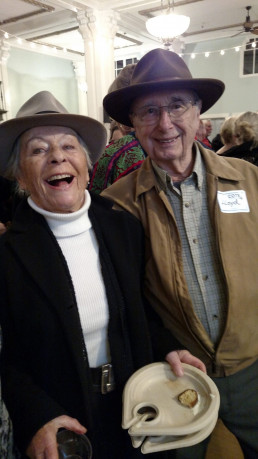
At the Hotel Petaluma, COTS Co-Founder Laure Reichek celebrates our 30th anniversary with volunteer Lloyd Smalley, who helped us write our articles of incorporation to become a nonprofit.
We at COTS have been lucky enough to use the hotel’s grand ballroom free of charge for several events, most notably, our 30th anniversary celebration, where we thanked the volunteers and supporters who started COTS in 1988 and all those who came after.
“It was a beautiful event,” says COTS Board Member Judy Tuhtan. “The beauty of the ballroom and its resonance with Petaluma history made it even more meaningful.”
The hotel is open to guests now, but, unfortunately, cannot host large events.
We’ll all feel the loss, especially around the holidays, times when we’re used to dropping in for the community events or caroling in the lobby.
Melissa Becker, President of the Fabulous Women of Petaluma, has partnered with the Hotel Petaluma for many years on the Festival of Trees. The Festival brings hundreds of people together to celebrate the holidays while benefiting local nonprofits. Melissa can’t speak highly enough about the hotel’s support. Shannon makes her staff available to help with set-up, event management and “positive energy,” Melissa says. “The Hotel Petaluma is classy, both in structure and in staff, and they are delightful to team up with on an event.”
We can’t wait to gather again, and we can’t wait to see what new wonders the hotel’s renovation has revealed.
Thank you, Hotel Petaluma!
Want to read more stories about our business sponsors? Visit our Business Gives Back homepage by clicking here!
Share this story with your friends and family:





